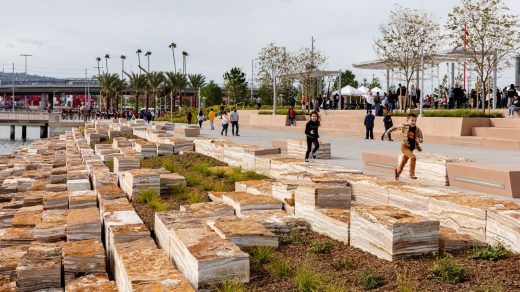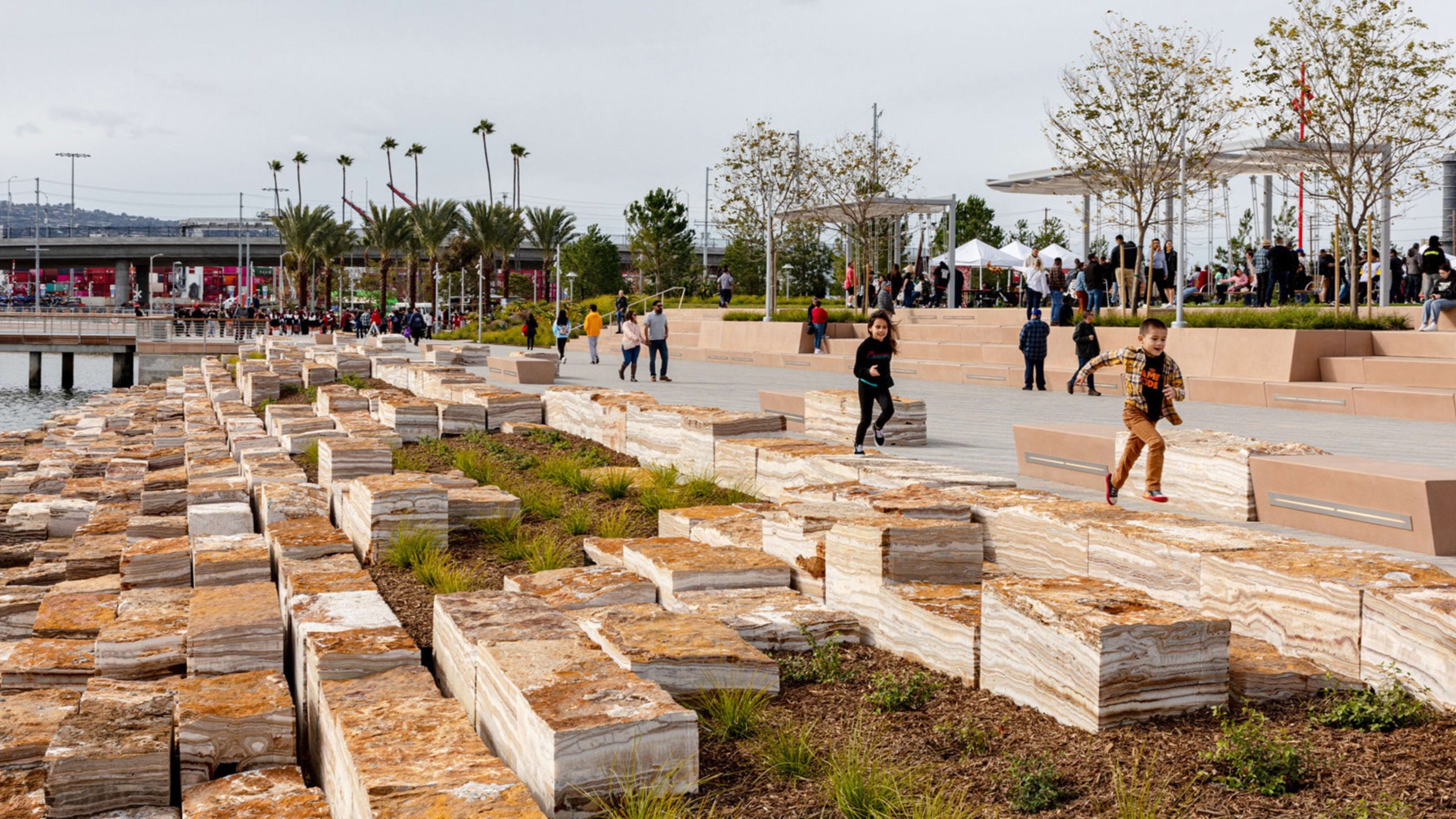How the Port of L.A. transformed an industrial site into an idyllic waterfront park
How the Port of L.A. transformed an industrial site into an idyllic waterfront park
The new public space gives the port’s neighbors rare access to the ocean.
BY Nate Berg
In the shadow of towering cranes and hulking cargo ships, a unique new public park has just opened in Los Angeles. Located on the edge of the Port of L.A. complex, the largest and busiest port in North America, the new park is a rare piece of public space on a hard-working waterfront. Covering 10 acres, the park adds access and recreation to what was formerly off-limits industrial land, creating a boon for residents of the port-adjacent community of Wilmington.
Sasaski, in partnership with the Port of L.A., designed Wilmington Waterfront Promenade as part of a broader master plan in the area to convert polluted brownfield sites into parks and public amenities. The waterfront park is a few blocks away from a 30-acre park and community center built along a corridor between the port and the residential area that sits on its edge. That park has become a new center for the community of Wilmington, which is home to the port and an active oil refinery, making it a pollution hotspot.
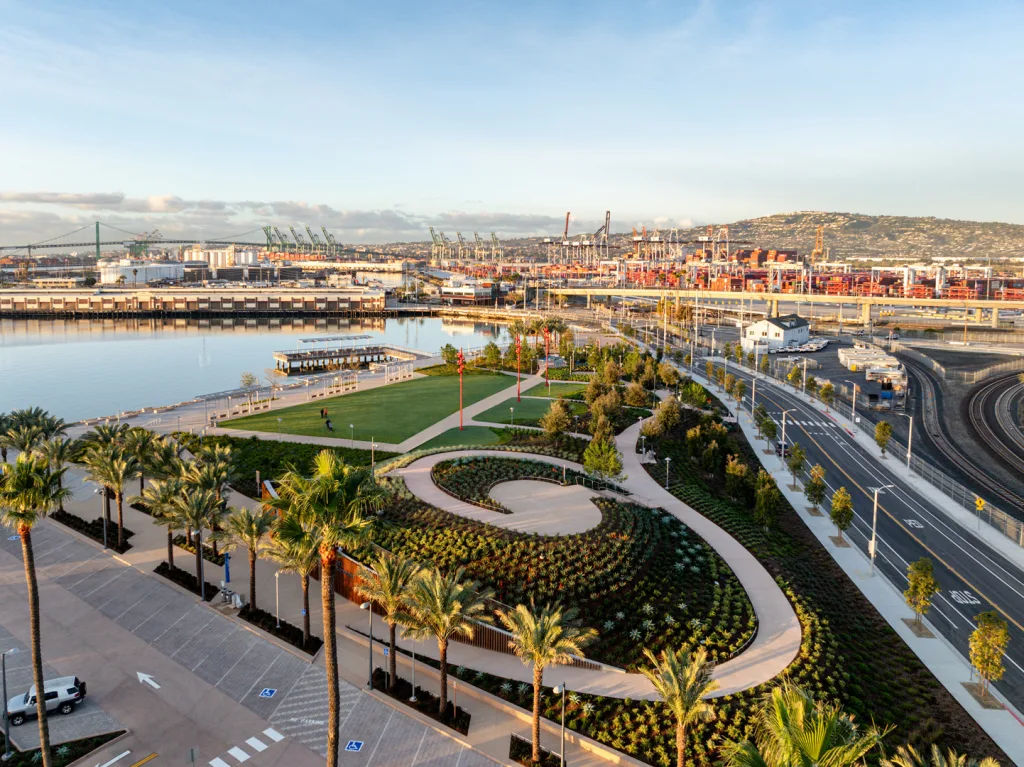
A new use for the waterfront
For residents, these industrial and maritime land uses have historically made accessing the waterfront nearly impossible. “It was really important for the community to get back to the water,” says landscape architect Philip Dugdale, who co-directs Sasaki’s New York office.
The waterfront park features a large playground and grass field, more than 200 trees, walking paths, and several waterfront access points. The main edge of the park is its 1,300-foot linear promenade along the water, which connects to a “picnic pier” that juts out into the harbor and includes shaded seating and tables, as well as a net-like play space that sits just above the water’s surface.
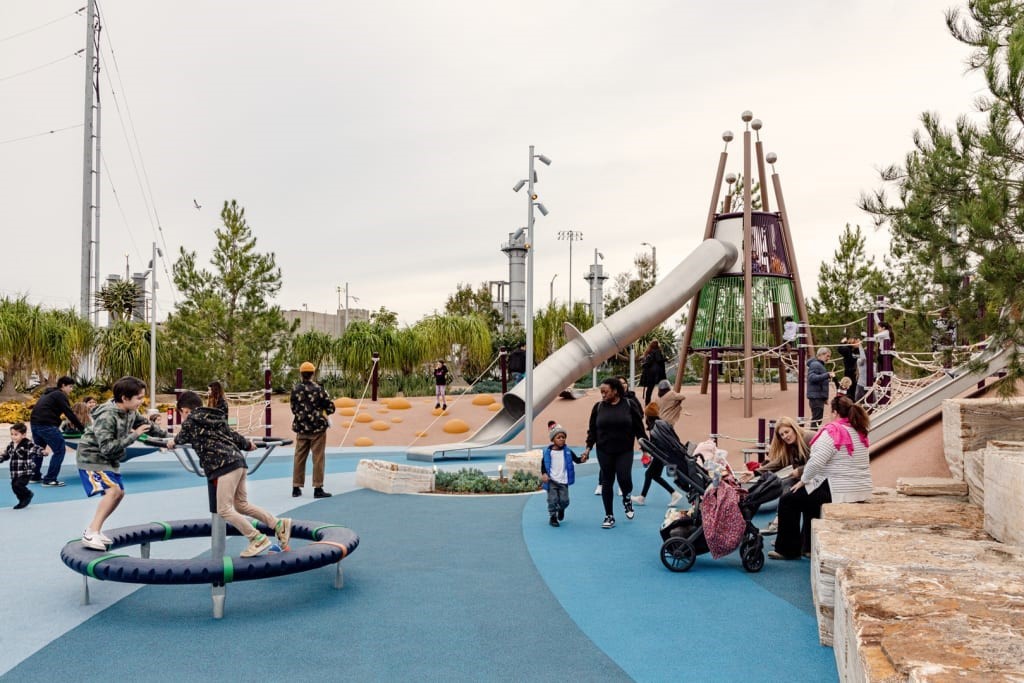
The standout piece of the park design is what Sasaki calls Water’s Edge, a 270-foot-wide shore made of onyx stone that steps down into the water. With no protective barriers, the space is meant to be a place where visitors can literally touch the water. It’s also meant to create a deeper connection to the natural rhythms of a waterfront that has been thoroughly manipulated by human industry.
“We carefully designed those tidal steps in a way that created these moments as during the day when the tide rises and falls. The actual edge changes and creates these little pockets, these little moments, these pools of water,” says Dugdale. “So each time you came back, it would be slightly different.”
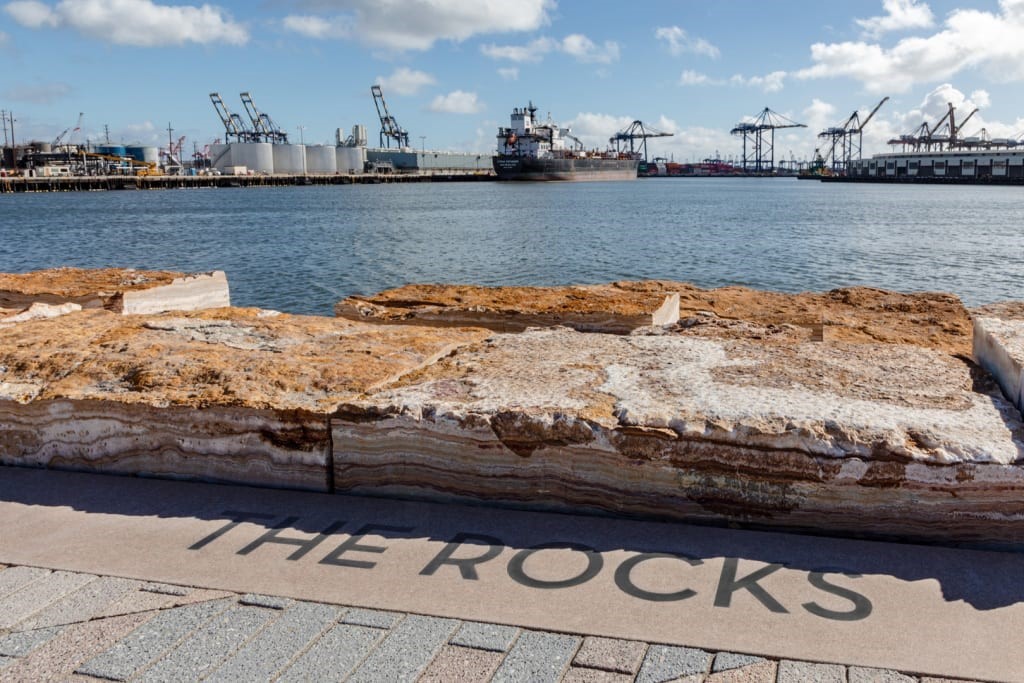
The gradual rise of the stones carries through the rest of the park. The stone steps led to a walkway that also serves as the top of a seawall, which leads up to elevated lawns, which then rise to planted mounds and a bluff peaking at 16 feet above street level. The entire site has been designed with sea level rise in mind, and these elevations are supposed to withstand any tidal surge or rise anticipated over the next half century.
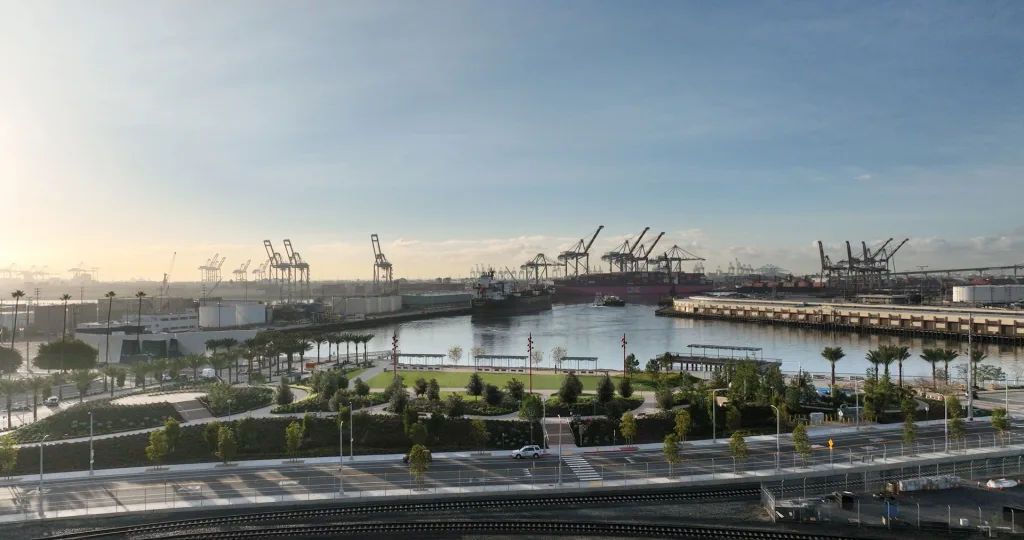
Raising the site was also about creating a landmark in the area. Dugdale says the mounded earth and the planting around the edges of the park are an attempt to catch the eyes of people who may be driving by unaware that the industrial landscape has anything else to offer. “We were really thoughtful about the treatment of those edges,” he says. “You start to see the greenness of the edge before you arrive and it draws you to the park.”
For the Wilmington neighborhood, this new public space is a stark contrast to the previous waterfront experience, which felt more machine than human. Now, people can get close to or even touch the water along the shore. There’s no escaping the massive port and refinery that surround the site, but the park offers a reminder that this highly industrial area is also a place for human life.
ABOUT THE AUTHOR
(22)

